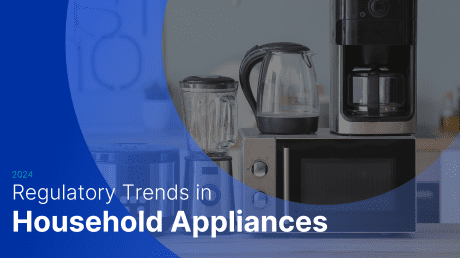
Key Takeaways from the Sustainable Apparel and Textiles Conference USA

Authored by MARIA MARECKI, SENIOR REGULATORY CONSULTANT, compliance & risks
The Sustainable Apparel and Textiles Conference USA took place on June 21-22 in New York City.
A number of topics were discussed including best-practices for keeping up with evolving legislation, reducing waste, greenwashing, and managing consumer and supply chain communications.
Below we look at some key discussions and areas of focus at the Sustainable Apparel and Textiles Conference USA, covering best-practices in circularity and waste reduction, sustainability claims and greenwashing, and evolving human rights / ESG legislation.
Circularity and Waste Reduction
- Circularity should also be considered at various stages of the product.
- At the design stage, set circularity goals for designers. Design principles such as low-impact materials, longevity and low-waste should be incorporated. Though sometimes these principles are in contrast with fast-fashion.
- Microfibers should be addressed at design. Fibers that shed less cost more.
- Reducing chemicals of concern should be considered at this stage.
- Waste is being generated in manufacturing before it hits the consumer, much of which is being incinerated. Brands should consider the quality of the waste they are creating and that their waste is model material. For instance, a textile to which a foam has been applied to is unusable.
- Reduce inputs to make the same amount of product. Only use components that are absolutely necessary.
- Secondary products can be made out of scraps.
- Overproduction creates waste and impacts ESG goals. An apparel brand’s average amount of unsold inventory is around 30%. Factory waste and unsold clothes are side-effects of industry-wide overproduction.
- The further away the order is placed from when the product is to hit the market the more excess inventory is created. Relationships with factories are important in trying to deal with overproduction.
- Additionally, artificial intelligence could play a role in better forecasting and assist brands from overestimating.
- Consider changing chemical regulations as it also impacts overproduction and increases waste. Currently, companies have inventory on hand of products that have intentionally added PFAS, all of which may not be able to be sold before US state requirements PFAS enter into force.
- Take-back is a consideration for post-consumer waste. Extended producer responsibility schemes have been passed in Europe in France and the Netherlands. More are expected, including eventually in the US as California is considering SB-707 Responsible Textile Recovery Act of 2023.
- Resale of products, and the refreshing and repairing of products should also be strategies that should be employed.
Sustainability Claims and Greenwashing
Regarding sustainability claims and greenwashing, companies struggle with use of the word “sustainable” as there is no agreed upon definition. Companies don’t feel as if their products meet a definition but may feel pressure to use the word.
Consumer trust in the apparel industry’s sustainability efforts has diminished as well, and brands may be hesitant to share their sustainability progress with the public with the risk of backlash.
To avoid greenwashing, focus on a specific achievement in a way the consumers can understand. Additionally, all sustainability information will not fit on a label. Put information on your website about all of the work being done.
Evolving Human Rights / ESG Legislation
Companies must stay informed on proposed legislation. This includes going to industry events and talking directly to legislators. Paying attention to voluntary industry initiatives is also important as this could be a sign of what may be coming in legislation.
As proposed regulation progresses it is important to inform others in the organization about impending legislation as early as possible so that systems can be put in place and all affected parts of the organization will be ready.
Currently, the European Union is ahead of the US in regulation. However, the SEC climate disclosure requirements are expected this year.
Additionally, though the New York Fashion Sustainability and Social Accountability Act (A8352/S7428), which would have required fashion retail sellers and manufacturers to disclose environmental and social due diligence policies did not pass, it is expected that something similar will eventually be enacted in the US.
Stay Ahead Of Regulatory Changes
Accelerate your ability to achieve, maintain & expand market access for all products in global markets with C2P – Your key to unlocking market access, trusted by more than 300 of the world’s leading brands.
C2P is an enterprise SaaS platform providing everything you need in one place to achieve your business objectives by proving compliance in over 195 countries.
C2P is purpose-built to be tailored to your specific needs with comprehensive capabilities that enable enterprise-wide management of regulations, standards, requirements and evidence.
Add-on packages help accelerate market access through use-case-specific solutions, global regulatory content, a global team of subject matter experts and professional services.
- Accelerate time-to-market for products
- Reduce non-compliance risks that impact your ability to meet business goals and cause reputational damage
- Enable business continuity by digitizing your compliance process and building corporate memory
- Improve efficiency and enable your team to focus on business critical initiatives rather than manual tasks
- Save time with access to Compliance & Risks’ extensive Knowledge Partner network
Market Insights Straight to Your Inbox
Get the most important regulatory updates straight to your inbox. Join 50,000+ product compliance & market access experts around the world!









